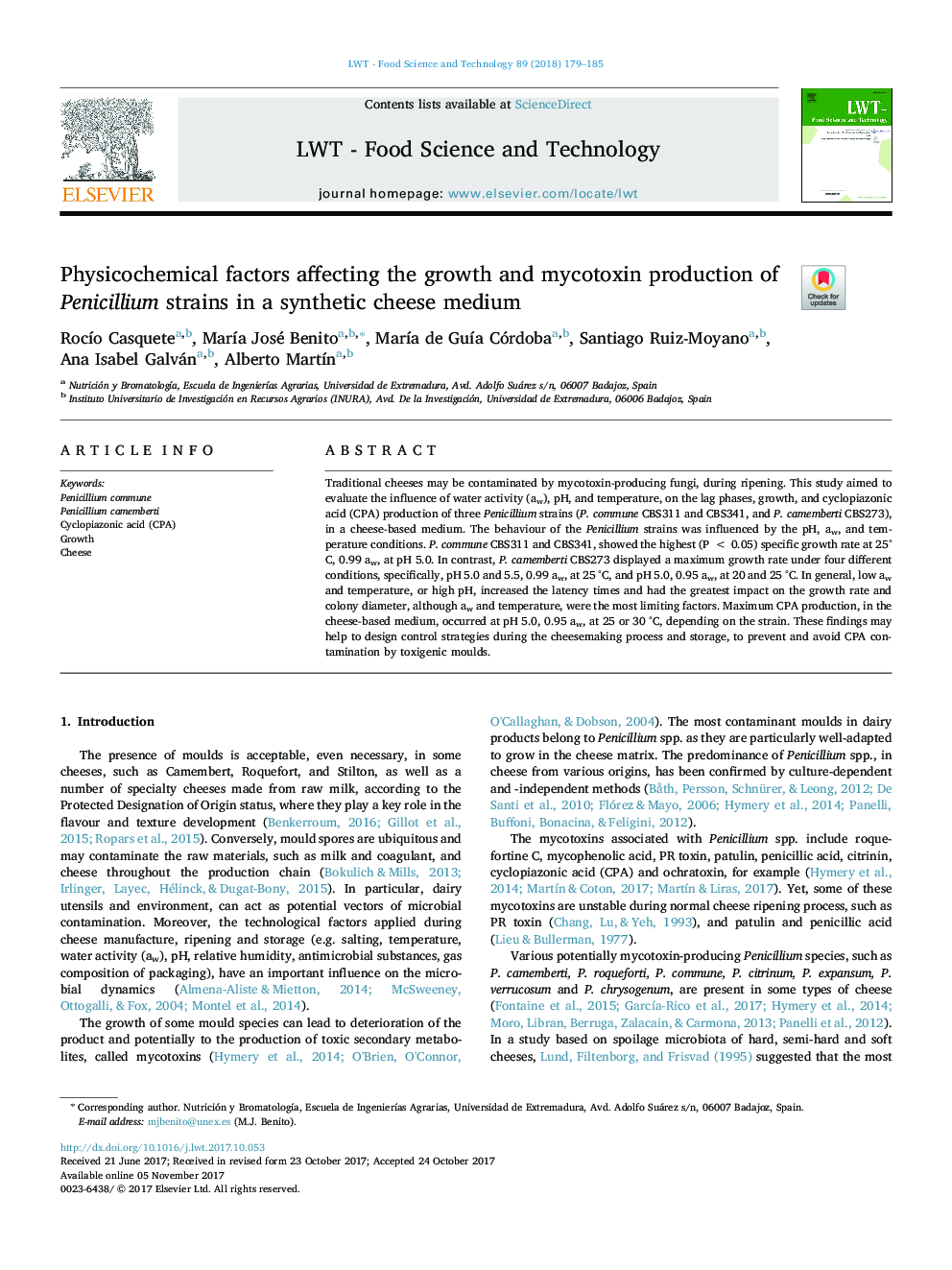| Article ID | Journal | Published Year | Pages | File Type |
|---|---|---|---|---|
| 8891894 | LWT - Food Science and Technology | 2018 | 7 Pages |
Abstract
Traditional cheeses may be contaminated by mycotoxin-producing fungi, during ripening. This study aimed to evaluate the influence of water activity (aw), pH, and temperature, on the lag phases, growth, and cyclopiazonic acid (CPA) production of three Penicillium strains (P. commune CBS311 and CBS341, and P. camemberti CBS273), in a cheese-based medium. The behaviour of the Penicillium strains was influenced by the pH, aw, and temperature conditions. P. commune CBS311 and CBS341, showed the highest (P < 0.05) specific growth rate at 25° C, 0.99 aw, at pH 5.0. In contrast, P. camemberti CBS273 displayed a maximum growth rate under four different conditions, specifically, pH 5.0 and 5.5, 0.99 aw, at 25 °C, and pH 5.0, 0.95 aw, at 20 and 25 °C. In general, low aw and temperature, or high pH, increased the latency times and had the greatest impact on the growth rate and colony diameter, although aw and temperature, were the most limiting factors. Maximum CPA production, in the cheese-based medium, occurred at pH 5.0, 0.95 aw, at 25 or 30 °C, depending on the strain. These findings may help to design control strategies during the cheesemaking process and storage, to prevent and avoid CPA contamination by toxigenic moulds.
Related Topics
Life Sciences
Agricultural and Biological Sciences
Food Science
Authors
RocÃo Casquete, MarÃa José Benito, MarÃa de GuÃa Córdoba, Santiago Ruiz-Moyano, Ana Isabel Galván, Alberto MartÃn,
